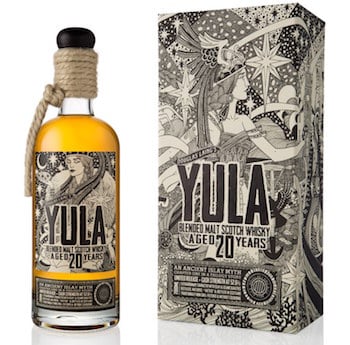
Yula, as the legend goes, was a beautiful Norse goddess who, according to Douglas Laing, “went in search of her long lost love with an apron full of stones. The stones fell out as she travelled, forming a string of islands and leaving behind a trail of her empty quest. For Yula never did find her love, but perished instead in the treacherous seas surrounding Islay, the last jewel shaped stone to fall from her apron.
“And it’s here on Islay, which in old Norse means ‘Yula’s Isle’, that our tragic heroine is buried, her final resting place marked by two standing stones which can still be seen to this day.”
The whole thing brings a tear to my eye. Seriously, though, the whisky looks to be quite fascinating, consisting of several of the “Islands’ most sought after peated malts.” It is bottled at 52.6% ABV and is both non-chill filtered and of natural color.
“This exciting trilogy of Island Malts tells a tale both in terms of the ancient legend of Yula but importantly also the spirit story,” said Cara Laing, Director of Whisky at Douglas Laing, in a statement. “Distilled in 1995, we’ll see this cask strength maritime malt evolve with each annual release, while retaining that distinct oceanic, island character. In Yula, we believe we’ve combined two of life’s greatest pleasures – a charming tale and a great whisky!”
Only 900 bottles of Douglas Laing Yula 20 Year Old are being released at retail, and official tasting notes are below should you want to learn more. Price-wise, expect to pay around £115 ($175 USD) should you choose to track one down.
-
On the nose, Yula is clean and fresh, with an oceanic character. Palate-wise, detect sweet barley and peat smoke initially, building to charred wood, chimney soot and soft tones of tar, before reverting to its earlier, butterscotch sweetness. More burnt hues appear on the finish, with the introduction of soft camphor tones, coal dust and smoke.



